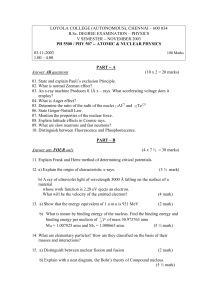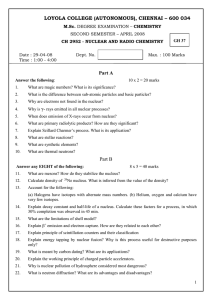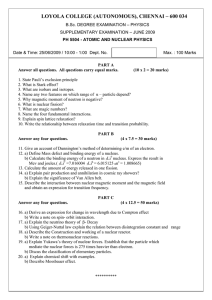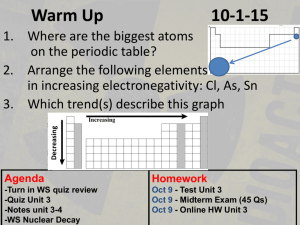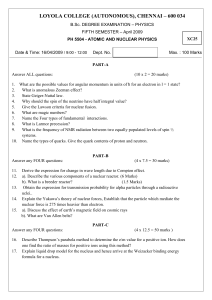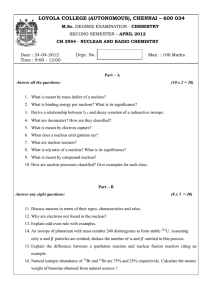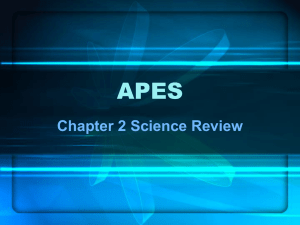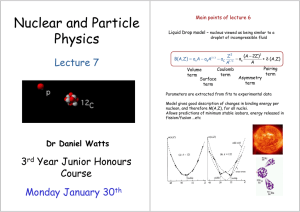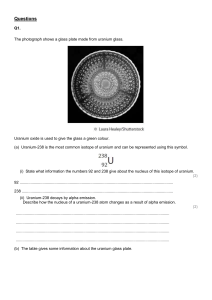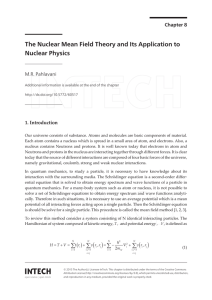LOYOLA COLLEGE (AUTONOMOUS), CHENNAI – 600 034
advertisement
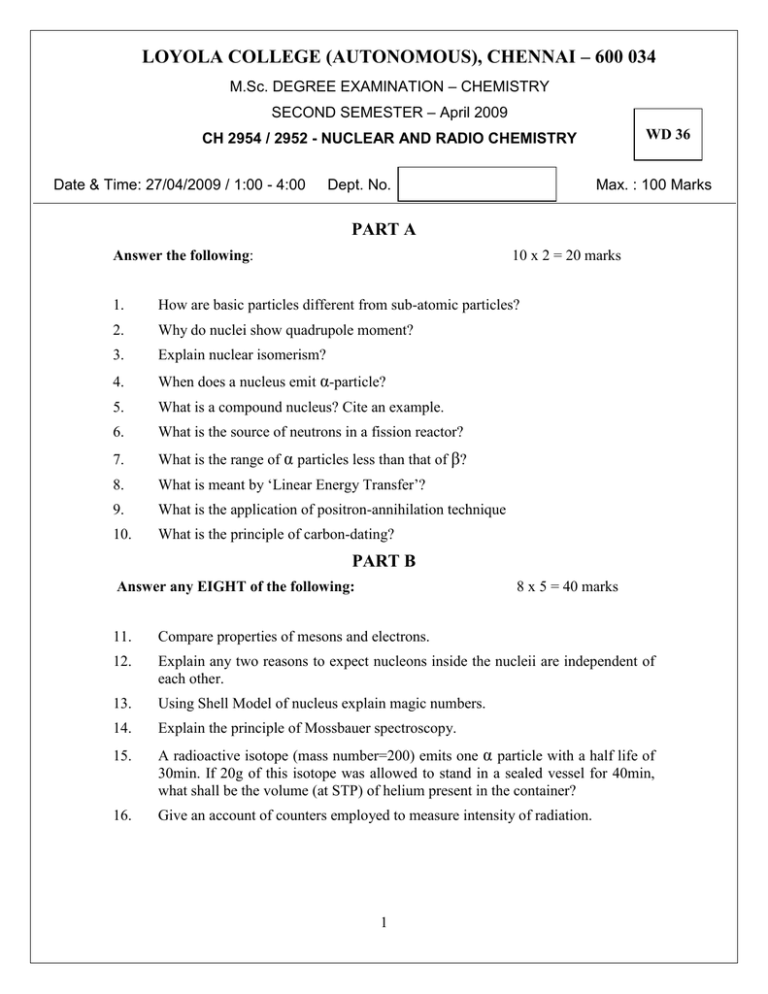
LOYOLA COLLEGE (AUTONOMOUS), CHENNAI – 600 034 M.Sc. DEGREE EXAMINATION – CHEMISTRY SECOND SEMESTER – April 2009 WD 36 CH 2954 / 2952 - NUCLEAR AND RADIO CHEMISTRY Date & Time: 27/04/2009 / 1:00 - 4:00 Dept. No. Max. : 100 Marks PART A Answer the following: 10 x 2 = 20 marks 1. How are basic particles different from sub-atomic particles? 2. Why do nuclei show quadrupole moment? 3. Explain nuclear isomerism? 4. When does a nucleus emit α-particle? 5. What is a compound nucleus? Cite an example. 6. What is the source of neutrons in a fission reactor? 7. What is the range of α particles less than that of β? 8. What is meant by ‘Linear Energy Transfer’? 9. What is the application of positron-annihilation technique 10. What is the principle of carbon-dating? PART B Answer any EIGHT of the following: 8 x 5 = 40 marks 11. Compare properties of mesons and electrons. 12. Explain any two reasons to expect nucleons inside the nucleii are independent of each other. 13. Using Shell Model of nucleus explain magic numbers. 14. Explain the principle of Mossbauer spectroscopy. 15. A radioactive isotope (mass number=200) emits one α particle with a half life of 30min. If 20g of this isotope was allowed to stand in a sealed vessel for 40min, what shall be the volume (at STP) of helium present in the container? 16. Give an account of counters employed to measure intensity of radiation. 1 17. Explain nuclear fusion reaction and its applications. 18. Explain principle and working of cyclotron. 19. Write a note on chemical dosimeters. 20. Discuss the preparation and properties of solvated electrons. 21. How are radioactive isotopes useful in understanding chemical reaction mechanisms? 22. What are the advantages, disadvantages and threats of tapping nuclear energy? PART C Answer any FOUR of the following: 4 x 10 = 40 marks 23. Using concepts of liquid drop model derive an expression for binding energy of a nucleus. 24. Discuss various spontaneous and induced nuclear processes. 25. Explain the use of fission reaction to produce energy and principle involved in it. 26. Explain proposed mechanisms for radiolysis of water. 27. Explain the principle and uses of isotope dilution analysis. 28. Write short notes on (i) Szillard Charmer’s Process. (ii) Aufbau Order for filling of nucleons in shells. ****************** 2
